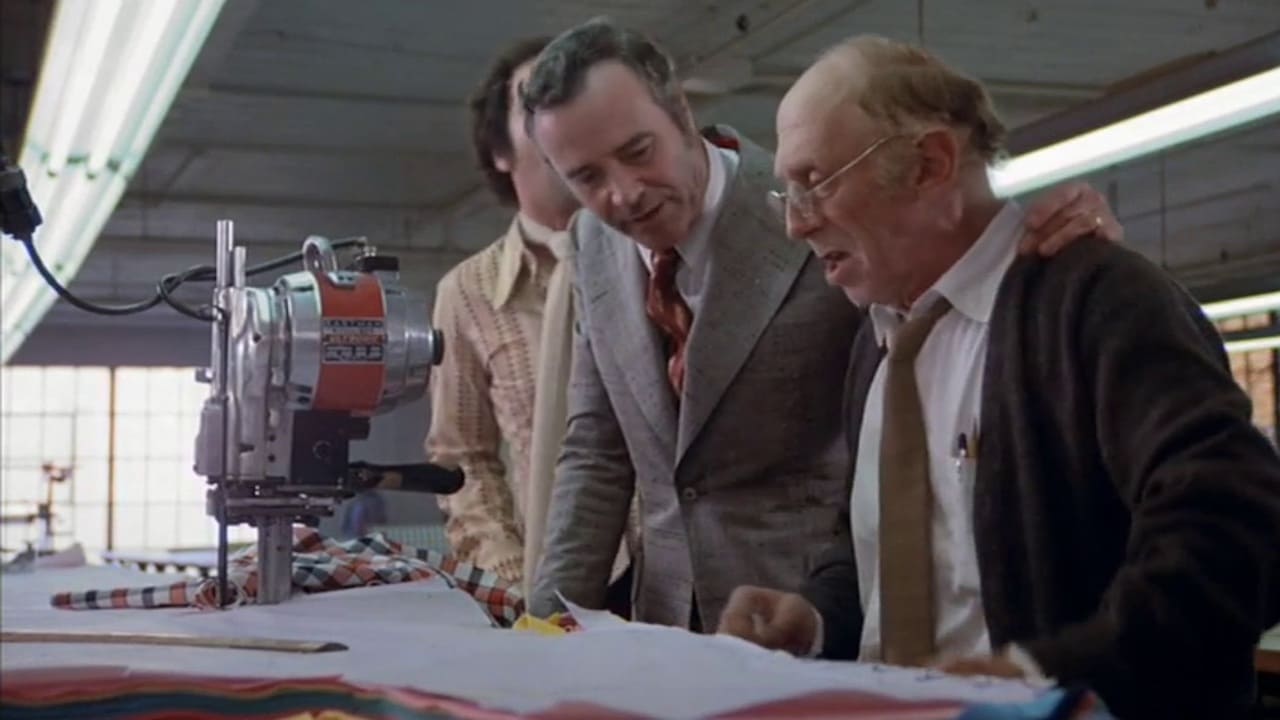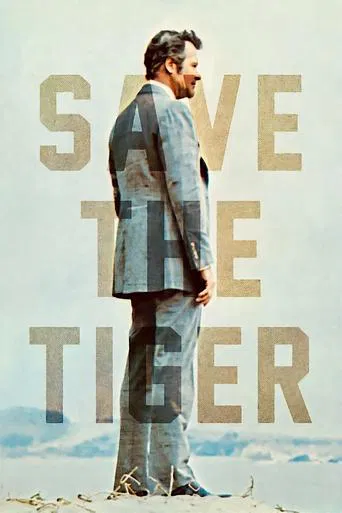

I love this movie so much
... View MoreAn Exercise In Nonsense
... View MoreThere is just so much movie here. For some it may be too much. But in the same secretly sarcastic way most telemarketers say the phrase, the title of this one is particularly apt.
... View MoreThis is a coming of age storyline that you've seen in one form or another for decades. It takes a truly unique voice to make yet another one worth watching.
... View MoreHere's another one of those frustrating films where the outcome is left to the discretion of the viewer. Did the Capri Casuals facility get torched? Do Harry (Jack Lemmon) and Phil (Jack Gilford) wind up under a fraud investigation? It's not often you wind up with a picture where the most redeeming character winds up being an arsonist with ethics, who won't set a building on fire that has safety violations because it would leave the insurance payoff in doubt. Sounds like the guy was a consummate professional.But if you like your angst ridden characters who question their very existence in a career riddled with missed opportunities while lamenting the way things used to be, then there's probably no one better to portray that guy than your every man Jack Lemmon. When he flashes back to the war buddies he had back at Anzio Beach, you get a pretty good idea that the guy is on a downhill slide that even a twenty one year old free spirit won't be able to fix.At least the film makers found a way to make a connection to the title with the all too brief scene of an environmentalist making passers-by aware of the fate of the Bengal tiger. Harry distractedly adds his name to a petition in one of those throwaway moments that holds no resonance for the fate of tigers or anything else. His final comeuppance comes at the end of the story when the sandlot gang informs him that "You can't play with us, Mister". Only fitting, as most everything else Harry touched wound up being a shutout.
... View MoreEVERYONE has films that for some strange reason, seemingly completely out of sync with one's age and place and station in life at the time, resonate and then some, impacting that person for years to come.For me, the two that stand out in that regard are 1968's "The Swimmer" and 1973's "Save the Tiger," both dark character studies dealing with morality, amorality and the twists and turns of complex lives not always so well lived by their middle-aged characters.Why I identified with these characters at such an early age myself I have no idea, only that their serpentine screen dilemmas provided a kind of moral road map in the real world, at least for me, and did their jobs as cinematic storytellers in staying with me all these years, still."The Swimmer," taken from a short story by John Cheever, stars Burt Lancaster as Neddy, an upper-class Connecticut man whom we find lounging poolside with friends in an affluent suburb.It occurs to him that he can "swim home" by visiting pools of friends and acquaintances, a route that he sees as a kind of "river."As the man swims, we begin to understand more and more about his life, or think we do, and he evolves through conversations, confrontations and offhand comments, until he winds up ingloriously at a public pool and, finally, standing shivering in the pouring rain before the gates of his mansion in one of filmdom's most surprising endings.Many fascinating characters people the film, played by many a recognizable face, including Joan Rivers (yes, that Joan Rivers), John Garfield Jr. (son of the great noir star), Janice Rule, Marge Champion (dancer-choreographer Gower Champion's better half), Kim Hunter and Janet Landgard.The film was directed by Frank Perry (with some scenes overseen by Robert Redford's frequent collaborator, Sydney Pollack, who is uncredited), with a screenplay by Perry's wife, Eleanor."Save the Tiger" stars Jack Lemmon as Harry Stoner, a clothing manufacturer who is undergoing the loss of youthful idealism as he weighs whether or not to pay an arsonist to torch his factory so he can survive financially through the insurance settlement. His friend and business partner is played by an extraordinarily effective Jack Gilford, a rubber-faced actor with the saddest eyes you'll ever see best known to a generation as the Cracker Jack man.Like Lancaster's Neddy in "The Swimmer," Lemmon's Stoner in "Tiger" is undergoing more than an evolution, but a breakdown, not only emotionally, but spiritually as well. Each story is a type of first-person morality play as seen through the eyes of these central characters.Lemmon won the best actor Oscar for his performance (beating out, among others, Redford, for his turn in "The Sting"), and the film was voted best drama by the Writers Guild of America.Both films seem to have evaporated into the mists of time, little remembered or considered by generations that came after. But they've stayed with me, I like to think because they were both beautifully rendered and had something worthwhile to say, expressing it uniquely and well. If you're in the mood for thought-provoking character studies that will stay with you long after viewing, and for all the right reasons, I recommend giving them a look.
... View MoreSome younger viewers may wonder how a comedian like Jack Lemmon, in a practically unknown film called Save the Tiger, could have possibly swiped the Best Actor Oscar from legendary actors like Marlon Brando (Last Tango in Paris), Jack Nicholson (The Last Detail) and Al Pacino (Serpico). But if they'll actually watch the film, they'll find that Lemmon's performance is indeed better than all of them. In his first major dramatic role since Days of Wine and Roses (1962) he proves that he's much more than just a comedian, and that he's just as good as any of the young hot-shots of his time (Nicholson, Hoffman, Pacino, De Niro, Redford) and can even be as intense as his more celebrated peer Brando (with the added bonus of being funny, too).Lemmon plays businessman Harry Stoner with quiet intensity, emotions always bubbling beneath the surface. Stoner is jaded, nostalgic, a former idealist on the verge of a nervous breakdown; Lemmon delivers all that with utmost subtlety and hints of tremendous depth. Some may find Save the Tiger dull or slow, but it's a film that rewards patience and close attention - it's a character study in the finest sense of the word, and Lemmon is more than up to the task. Though some credit should be given to his excellent supporting cast (including Jack Gilford, Laurie Heineman, Norman Burton and Ned Glass) it's clearly Lemmon's show, and he delivers one of the finest acting jobs in the history of cinema. It demands a lot of patience from the viewer - more than Last Tango in Paris or Serpico, that's for sure. But it's worth every minute.
... View MoreJack Lemmon was the finest American motion-picture actor of the late twentieth century. He is often written off as a comedy star, and certainly some of his efforts in that realm of Hollywood entertainment are forgettable (though more than a few are still very human and very funny). But it is always exciting to see Lemmon unlimber his acting chops and portray the middle-class schlub trying to thrive and then just trying to survive modern life. His portrayal of Harry Stoner in SAVE THE TIGER ranks with his Joe Clay in THE DAYS OF WINE AND ROSES, Ed Horman in MISSING, and Shelley Levene in GLENGARY GLEN ROSS, to mention only his most notable dramatic roles. I'd like to think the Best Actor Oscar that Lemmon received for SAVE THE TIGER (he had been awarded Best Supporting Actor for playing Ensign Frank Thurlowe Pulver in 1955's MISTER ROBERTS) was the film community's overdue recognition that he could play for sighs and tears as well as for laughs.Seeing this film recently on TCM through the filter of 35 years, I was still moved by the commitment of Jack Lemmon to Harry Stoner. Unfortunately, SAVE THE TIGER remains an awkward and extremely self-conscious movie, as much so as when I first saw it in a theater in 1973. Steve Shagan's script contains no references to the Watergate scandal that had started the year before; but in the aftermath of the Vietnam War, American popular culture was becoming increasingly obsessed with moral decay. Many novels and films of the 1970s suggested that political corruption and official deceptions had blurred the boundaries of conventional good/bad, black-and-white morality with which most Americans had supposedly been comfortable. (That was the standard they usually saw in the movies, after all.) Viewed from the perspective of the early 21st century, the suggestion that government and corporate wrongdoing could somehow make personal immorality understandable, or even commendable, seems rather quaint -- a sop, perhaps, to a movie-going Baby Boomer generation that was coming of age and groping for its own moral grounding.There are many problems with this clunky script, not so much in terms of plot as in terms of texture. Harry Stoner's obsession with the joys of his youth -- baseball and big bands -- quickly turns into a heavy-handed exercise in nostalgia, as though Shagan is showing off his knowledge of 1940s popular culture (Shagan was born in 1927). Harry's apparent readiness to hire an arsonist to save his troubled business makes his moral agonizing less involving, though perhaps Shagan meant to enhance the difference between Harry's seeming confidence and the severe misgivings of his partner Phil (Jack Gilford). The big dramatic setpiece of the film -- Harry's speech to the buyers at his firm's fashion show -- is extremely suspicious. Harry strikes me as too much of a professional to start losing it at such a vital moment. Why THAT event for a PTSD flashback? (There's another scene toward the end of the film -- Harry standing alone on a beach, replaying the soundtrack of Anzio in his head -- that's more subtle and more effective.) And then there's Myra, the happy-go-lucky hippie chick with whom, Shagan apparently thought, "the kids" could identify. (With a smile, she offers to have sex with Harry about 47 seconds after they meet. Yeah, I could identify with that.) Myra's seeming innocence and optimism have so little to do with Harry Stoner that she seems not a contrast but an irrelevance.Shagan's script benefits from the direction of John G. Avildsen. The opening shot of Harry's swimming pool is haunting, and industrial Los Angeles looks appropriately unglamorous. All of the actors (including Laurie Heinemann as Myra) are credible. But the real reason to see SAVE THE TIGER is Jack Lemmon portraying Harry Stoner. If his performance can't rescue the film, it is still compelling -- an exploration of a human heart that will break your own.
... View More